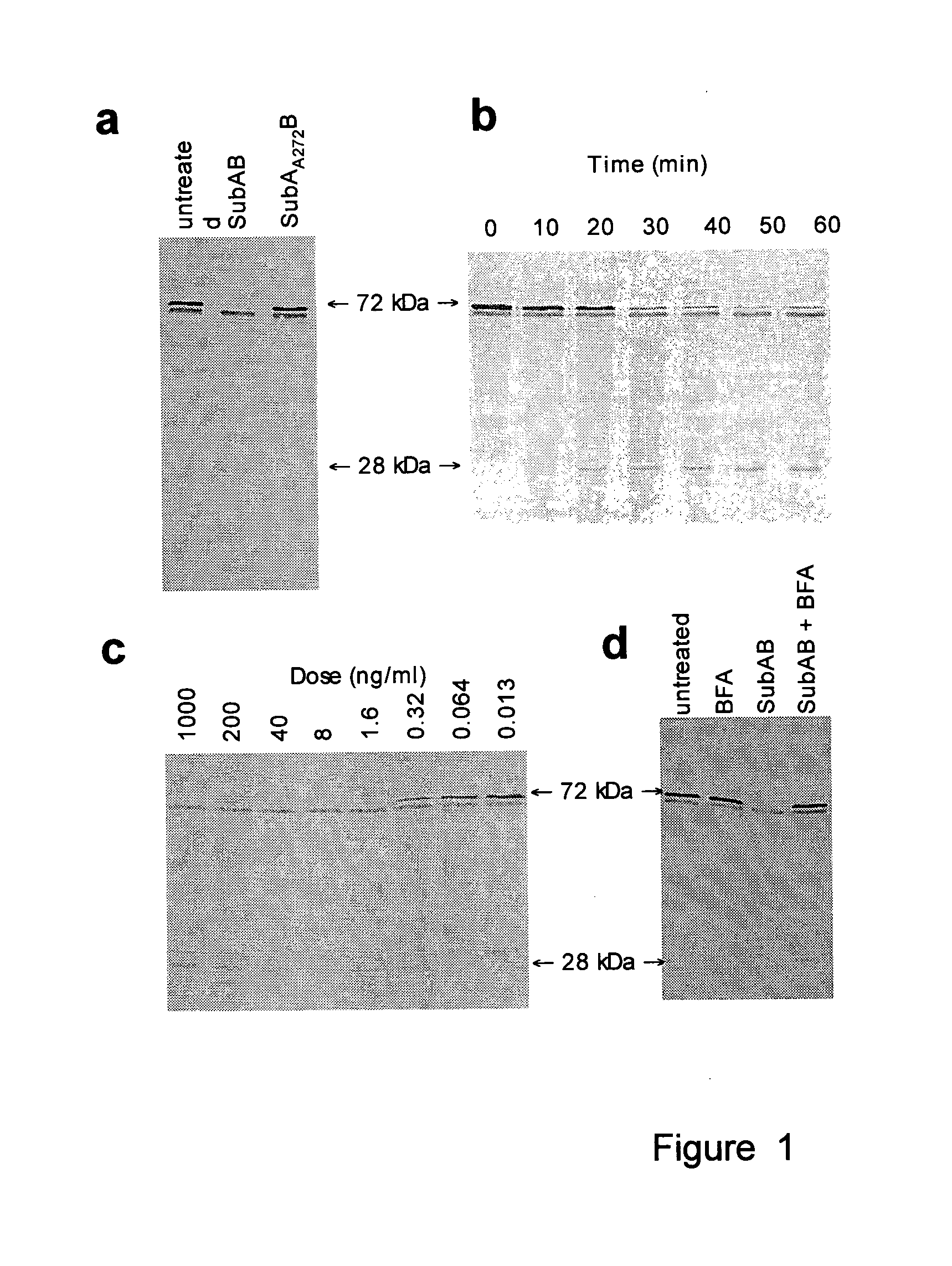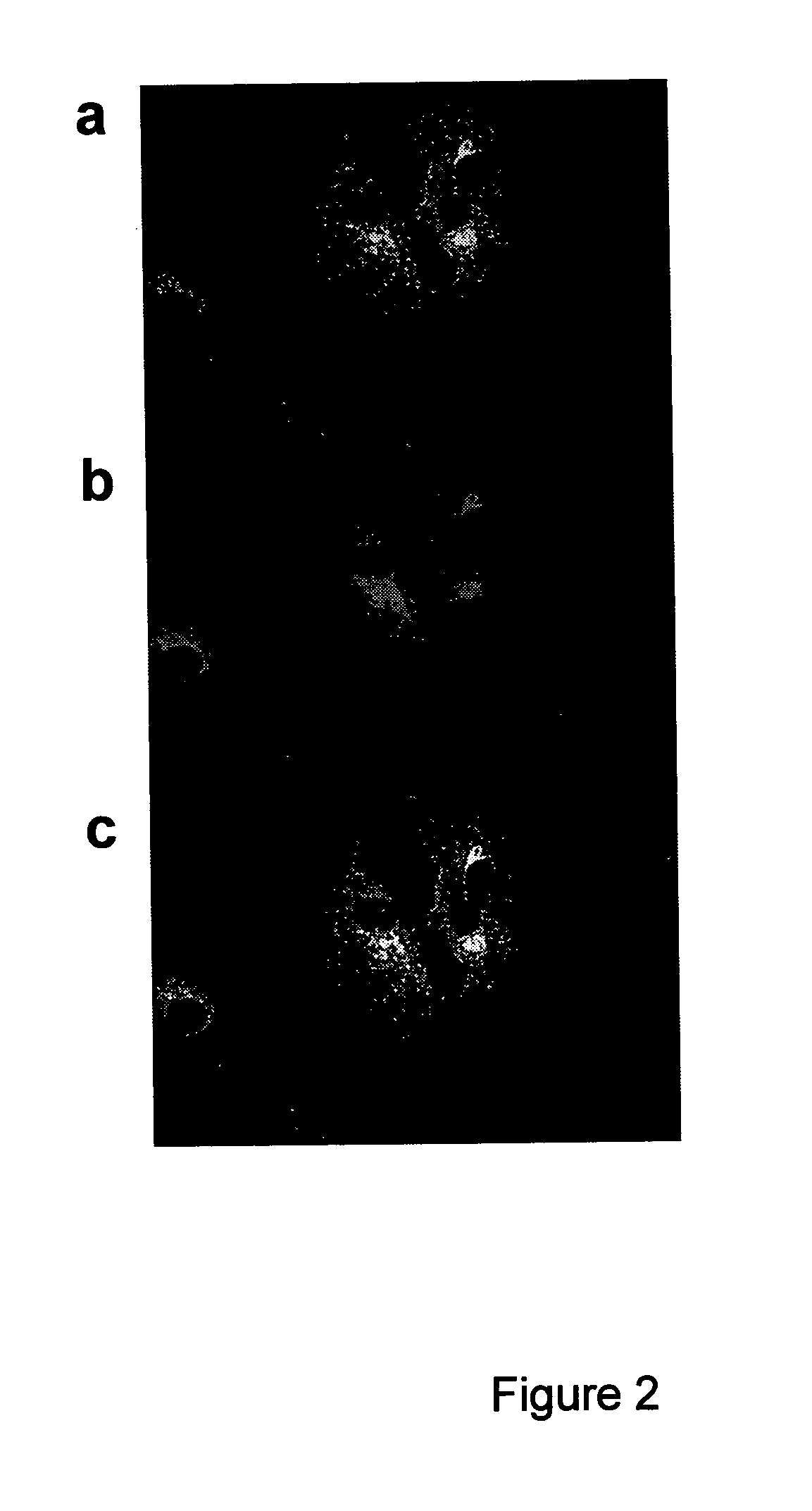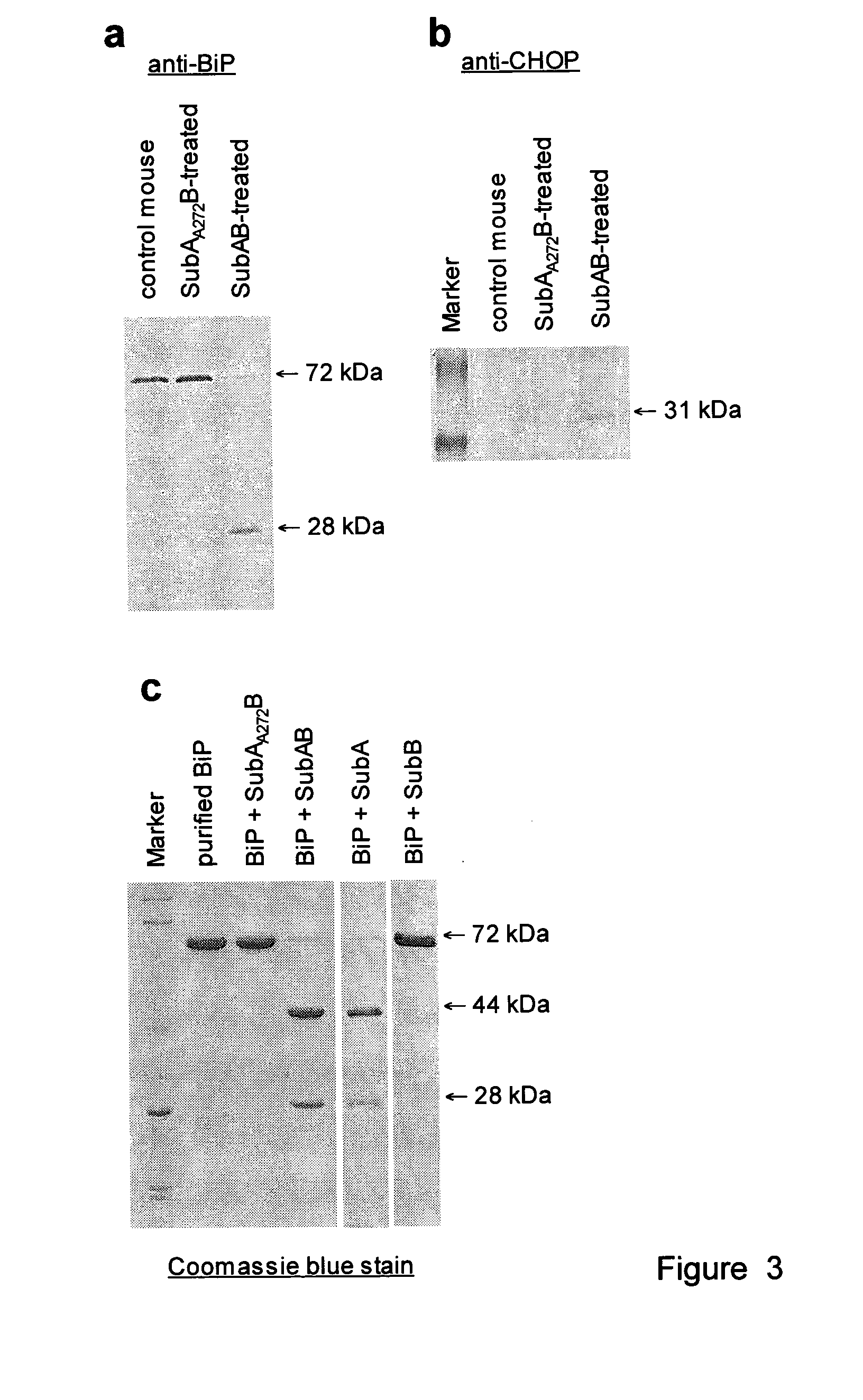Cleavage of bip by subtilase cytotoxin
a technology of cytotoxin and subtilase, which is applied in the field of cytotoxin cleavage of bip, and can solve the problems of premature degradation or aggregation of mutant proteins, inactivation of inability to inactivate existing and active bip
- Summary
- Abstract
- Description
- Claims
- Application Information
AI Technical Summary
Benefits of technology
Problems solved by technology
Method used
Image
Examples
example 1
[0170]STEC are an important cause of gastrointestinal disease in humans, particularly since these infections may result in life-threatening sequelae such as the haemolytic uraemic syndrome (HUS). Much of the pathology associated with STEC disease is thought to be due to systemic effects of Stx, but other factors are clearly important, and STEC strains differ markedly in their virulence for humans3. Subtilase cytotoxin (SubAB) was discovered in a highly virulent O113:H21 STEC strain, which was responsible for an outbreak of HUS in South Australia in 1998, and has since been detected in several other STEC serotypes2,4. SubAB is a potential bioterrorism agent, as it is more toxic for Vero (African green monkey kidney) cells than Shiga toxin, and is lethal for mice, resulting in extensive microvascular damage, thrombosis and necrosis in multiple organs, including the brain, kidneys and liver2. It was named “Subtilase cytotoxin”, because its 35-kDa A subunit (SubA) shares sequence homolo...
example 2
Construction of DNA Sequences Encoding EGF-SubA Fusion Protein
General Descriptions
Bacterial Strains, Plasmids, and Mammalian Cells
[0190]E. coli strains NovaBlue and BL21 (DE3) are commercially available from Novagen (USA). Vector pET / C4 (G4S)3 for bacterial expression of recombinant proteins with an N-terminal Cys-tag was made in SibTech, Inc32. Parental rat glioma cells (F98) and their derivatives F98 / EGFR engineered to express 106 EGFR per cell were kindly provided by Dr. R. Barth (The Ohio State University, Columbus, Ohio, USA). MDA-231luc, a luciferase-expressing derivative of MDA-MB-231 human breast carcinoma cells (ATCC # HTB-26™) were developed in Sibtech, Inc. as described earlier29. EGFR expression level in MDA231luc was estimated by flow-cytometry using EGFR-specific antibody (AbCam, Inc. USA) with F98 / EGFR cells serving as a standard. All cells were maintained in DMEM supplemented with 10% fetal bovine serum (Gemini, Inc., USA), 2 mM L-glutamine and antibiotics at 37° C.,...
example 3
Expression and Purification of Recombinant EGF-SubA
[0197]The pET / C4 (G4S)3EGF-SubA transformed E. coli cells BL21 (DE3) were grown in LB broth containing 34 mg / L kanamycin at 37° C. and 300 rpm shaking to the middle of the log phase of growth as detected by optical density at 600 nm. IPTG (isopropyl-β-D-thiogalactoside, Life Technologies, USA) was added to the culture to a final concentration of 1 mM to induce protein expression. Induced cultures were grown for 2 hours harvested by centrifugation (25 min, 5000×g) and ruptured using high-pressure homogenizer (Avestin, Canada) according to manufacturer's instructions. Soluble and insoluble parts of bacterial homogenate were separated by centrifugation (20 min, 10,000×g at 4° C.). Reducing SDS-PAGE analysis indicated that EGF-SubA fusion protein was present exclusively in insoluble part (FIG. 9). The inclusion body pellets were washed with the buffer containing 20 mM Tris-HCL, pH 8.0, 0.5 M NaCl and solubilized in 8 M urea supplemented...
PUM
| Property | Measurement | Unit |
|---|---|---|
| volume | aaaaa | aaaaa |
| volume | aaaaa | aaaaa |
| mass | aaaaa | aaaaa |
Abstract
Description
Claims
Application Information
 Login to View More
Login to View More - R&D
- Intellectual Property
- Life Sciences
- Materials
- Tech Scout
- Unparalleled Data Quality
- Higher Quality Content
- 60% Fewer Hallucinations
Browse by: Latest US Patents, China's latest patents, Technical Efficacy Thesaurus, Application Domain, Technology Topic, Popular Technical Reports.
© 2025 PatSnap. All rights reserved.Legal|Privacy policy|Modern Slavery Act Transparency Statement|Sitemap|About US| Contact US: help@patsnap.com



